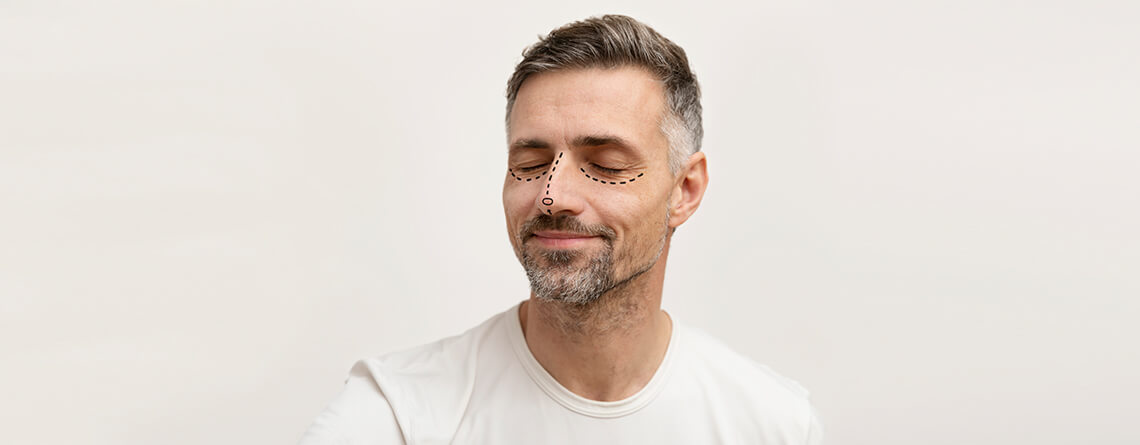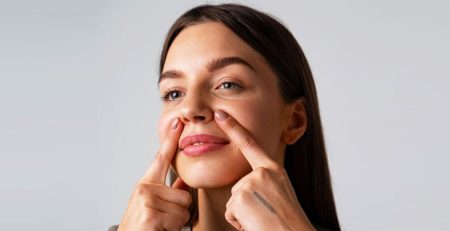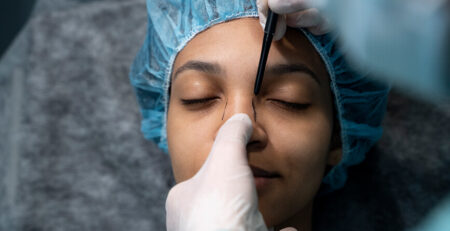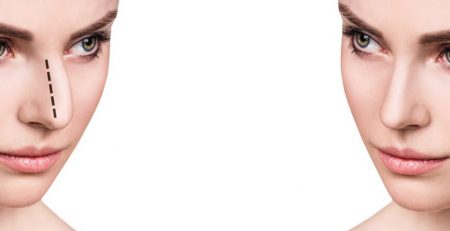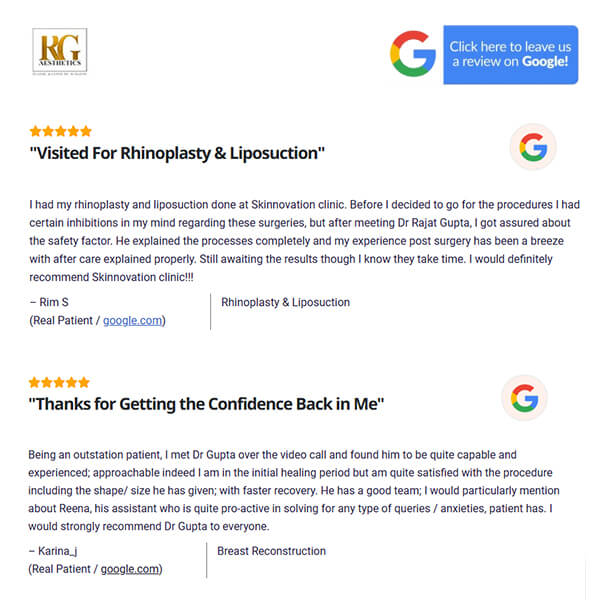How Long Do You Have To Wait For Revision Rhinoplasty?
Rhinoplasty, commonly known as a nose job, helps to improve self-confidence and satisfaction. However, for many, this transformative experience to perfection sometimes requires a little more effort. The revision rhinoplasty offers a second chance for those who seek refinement or correction of their initial surgery. However, undergoing two procedures at short time intervals might pose the risk of complications. Therefore, the plastic surgeon usually recommends waiting at least 12 months before the revision rhinoplasty. What is the significance of this waiting period? Let’s explore!
Why Do You Need Revision Rhinoplasty?
Revision rhinoplasty, sometimes called secondary rhinoplasty, is a follow-up surgical procedure performed to correct or refine the results of a previous nose surgery. But why do you need a revision rhinoplasty? Here are some of the compelling reasons to get revision nose job surgery:
Nasal Obstruction: Scarring or misalignment from the initial rhinoplasty surgery can block airflow through the nasal passages, leading to difficulty breathing, chronic congestion, and sinus infections. Revision rhinoplasty can address this by correcting the structural issues and improving airflow.
Septal Deviation: A deviated septum, where the cartilage dividing the nasal passages is crooked, can cause breathing problems on one side. Revision surgery can straighten the septum and improve airflow balance.
Narrowed Airway: Initial rhinoplasty might cause a narrow airway due to misalignment of tissues, which can contribute to snoring. Revision nose job surgery can widen the airway and improve airflow, reducing snoring.
Over-Resection of Tissue: Removing too much cartilage or bone during the initial surgery can weaken the nasal structure and lead to narrowing of the nasal passages, which can be addressed with revision rhinoplasty.
Addressing Underlying Causes: Revision surgery can address the structural causes of congestion, such as narrowed passages, polyps, or a deviated septum. This can improve airflow and drainage, reducing congestion.

Have questions or want to get started? We are ready to help you with a smile!
How Long Should You Wait Before Getting Revision Rhinoplasty?
Medically, this waiting period allows your nose to heal properly from the previous surgery. Our nose is a complex structure that involves bone, cartilage, and soft tissue. During the rhinoplasty surgery, the structure of the nose is modified by making required adjustments. These adjustments require time to get stabilized.
Also, rhinoplasty results in some swelling. Waiting after the surgery is crucial for the swelling to reduce and for the tissues to regain elasticity. These essential factors enable the surgeon to accurately evaluate and subsequently modify the nasal structure.
Typically, surgeons advocate for a minimum waiting period of one year following the first rhinoplasty. This recommendation, however, may vary depending on the individual’s unique healing process and the complexity involved in their initial surgery. You need to adhere to the recommended period to increase the chances of a successful and desired outcome in revision rhinoplasty.
Preparation for Revision Rhinoplasty Surgery
Preparing for the revision surgery is not just about physical readiness; you should also be mentally prepared for the second procedure.
Revision rhinoplasty requires a higher level of skill and expertise than primary rhinoplasty. Therefore, choosing the best rhinoplasty surgeon in Delhi who specializes in revision procedures and has a proven track record is essential. Do your research, read online reviews, and consult with a board-certified plastic surgeon. This certification ensures that the surgeon has undergone the required training.
During this preparation phase, it’s also crucial to manage expectations. Revision nose job surgery can be more complex, and the outcomes may vary. Setting realistic expectations helps to reduce the risk of disappointment.
Self-care is also important to prepare for revision surgery. Maintain good health, refrain from smoking, and follow a balanced diet to enhance the body’s healing capabilities. Engaging in relaxation techniques and stress management can also positively impact the overall surgical experience and recovery.
This period is also about patience and emotional preparation. A positive mindset, being hopeful yet realistic, and preparing mentally for the recovery process post-revision surgery are key aspects.
Revision Rhinoplasty Procedure
In revision rhinoplasty, additional cartilage is required to strengthen the nasal structure, particularly at the tip or the bridge. If the septal cartilage is found insufficient, the surgeon might harvest cartilage from other areas, such as the ear or the rib. This approach ensures the nose maintains or regains its intended shape and functionality.
Furthermore, addressing soft tissue issues in areas like the nose bridge, tip, and upper lateral cartilage may require additional tissue as a natural filler. This strategy aims to provide a lasting solution, helping restore the nose’s aesthetic and structural stability.
In cases where scarring within the nose has led to narrowed airways, skin grafts might be used to widen these passages and facilitate better breathing.
What to Expect From Revision Surgery
Revision nose job surgery, while similar in goal to primary rhinoplasty, is often a more delicate and complex procedure. Understanding what to expect can help you mentally and physically prepare for the revision rhinoplasty.
Increased Complexity: Revision rhinoplasty often deals with more complex issues, like scar tissue and altered nasal structures, which present additional challenges for the surgeon.
Advanced Surgical Techniques: The best rhinoplasty surgeon in Delhi might need more advanced techniques during revision rhinoplasty. Sometimes, this involves using grafting materials from other parts of the body.
Setting Realistic Expectations: The main purpose of revision rhinoplasty is improvement rather than perfection. Therefore, you must expect realistic improvement rather than idealization to achieve satisfaction in your results.
Understanding the Recovery Process: The recovery from revision rhinoplasty may be longer or more complex than the recovery from the initial surgery.
- Swelling and bruising immediately after the procedure are common, particularly around the eyes and nose. They usually peak in the first few days post-surgery and gradually reduce over the ensuing weeks.
- Some soreness and pressure in the nose are expected, which can usually be managed with pain medication as your surgeon prescribes.
- Bleeding and post-nasal drip may occur in the first 24-48 hours. Therefore, avoid blowing your nose during this period to prevent irritation and potential bleeding.
- Your nose may have a splint or cast for 7-10 days, depending on the specifics of your surgery. Keeping it dry and avoiding any bumps is essential.
- After 7 days, the swelling starts to lessen, and slowly, breathing improves. You can resume light activities but avoid strenuous exercise.
- The bruising will subside within four, and the initial healing stage progresses. You can resume most daily activities, but you still need to avoid contact sports or activities that risk bumping your nose.
- Most of the swelling subsides, and the final contour of your nose emerges. On the other hand, small alterations can last up to a year.
Are There Any Side Effects of Revision Rhinoplasty?
Unfortunately, like any other surgical procedure, revision rhinoplasty carries some side effects that you need to know before deciding to undergo the surgery.
The most common side of revision rhinoplasty may include swelling, bruising, discomfort, pain and nasal drainage. You might also experience temporary numbness in your nose and upper lip caused by nerve manipulation during surgery. Although revision rhinoplasty seeks to reduce scarring, some scarring is possible. However, skilled surgeons can often place scars strategically to make them less noticeable.
Although rare, some serious side effects of revision rhinoplasty are also there. These side effects may include:
- Internal scarring or changes in the nasal structure can increase the risk of breathing difficulties.
- While rare, infections can occur after any surgery. Fever, chills, redness, and swelling around the nose are all warning signs.
- Cartilage grafts may be utilized to reconstruct specific components during revision rhinoplasty. These grafts may not survive and need to be replaced in a future operation.
- While the goal is to achieve a balanced and symmetrical appearance, unforeseen complications or tissue healing might lead to some degree of asymmetry.
So, how could you avoid these complications?
- Choose the best rhinoplasty surgeon in Delhi who specializes in revision surgery.
- Also, taking prescribed medications, proper wound care and following your surgeon’s instructions make a big difference.
- Keep your head elevated while sleeping. It will help you reduce bleeding.
- Use an ice pack wrapped in a cloth to minimize swelling, especially in the first few days.
- Stick to low-impact exercise and gradually increase activity as your doctor directs.
- Gently clean your nose with saline solution as instructed by your surgeon.
It takes time for the final results of your surgery to become fully visible. Therefore, you should be patient and follow your surgeon’s instructions accordingly. However, if you experience any concerning symptoms like persistent bleeding, severe pain, or breathing difficulties, contact your surgeon immediately.
Find the Right Plastic Surgeon for Your Revision Rhinoplasty!
Revision rhinoplasty is often considered more complex than primary surgery due to scars, nasal structure, and lack of cartilage from the original surgery. Therefore, waiting a certain period before undergoing revision surgery can help you heal and create a safe space for secondary surgery.
Consulting a board-certified plastic surgeon can help you understand the required waiting period and its benefits. If you are looking for a plastic surgeon specializing in rhinoplasty, book your consultation with Dr Rajat Gupta today!
Dr. Rajat Gupta
MBBS, MS, DNB(Gen. Surg.),
DNB (Plastic Surgery)
Dr. Rajat Gupta is a board certified plastic surgeon in India with 13 years of experience to back his expertise in the domain of aesthetic surgeries.
Having completed his training from Maulana Azad Medical College and equipped with a thorough understanding of aesthetic needs of people, Dr. Gupta strives to offer the best remedies and cosmetic procedures outfitted with the latest technology to the aspirants in India and across the globe. To book an appointment, call: +91-9251711711 or email: contact@drrajatgupta.com

